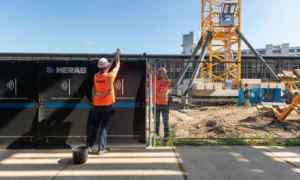Overseeing the credentialing process for healthcare providers is a meticulous task that involves multiple steps and can be time-consuming. In this informative blog post, we examine into the intricacies of medical credentialing, exploring why it takes between 90 to 120 days on average and the factors that can influence this timeframe.
From obtaining the application to finalizing the contracting phase, each step plays a crucial role in ensuring healthcare professionals can deliver quality care to their patients. Join us as we break down the provider credentialing process step-by-step and provide insights on how to streamline it effectively.
Provider Credentialing Process: Step-By-Step
| Obtaining Your Provider Credentialing Application | Completing Your Credentialing Information |
| To begin the credentialing process, healthcare providers must acquire the application, which can vary in complexity. This step involves reviewing Tax Identification Numbers and ensuring eligibility to become an in-network provider. | Provider credentialing involves gathering and preparing a comprehensive set of documents, including medical certificates, academic degrees, continuing medical education credits, and work history. |
Submitting Your Application
Your journey doesn’t end with the application submission. Consistent follow-up is key to identifying and rectifying any errors or omissions, thus avoiding unnecessary processing delays.
CAQH Review
After submission, the payor conducts a comparative analysis between the information provided in your application and your profile maintained by the CAQH and the National Practitioner Data Bank to ensure accuracy.
License Verification
Your professional licenses undergo a comprehensive check, including DEA registration, board certification, and medical license validation, to confirm current status and validity and ensure there are no ongoing disciplinary actions.
Contracting and Negotiating with Payers
Once the preceding steps are completed, the contracting phase begins where a contractual agreement is prepared for review and signature, allowing you to start seeing patients under the payor.
Credentialing Committee Review
Verification of your credentials is reviewed by a credentialing committee to finalize and approve your application, ensuring that all necessary steps have been completed accurately.
Ongoing Monitoring and Re-credentialing
It’s imperative to understand the importance of ongoing monitoring and re-credentialing to maintain your credentials and continue providing quality patient care in compliance with healthcare industry standards.
Factors Influencing Credentialing Duration
Volume of Applications and Workload of Credentialing Committees
Factors influencing the credentialing duration can vary widely, but a significant consideration is the volume of applications received by the credentialing committees. The workload of these committees directly impacts the time it takes for applications to be processed.
Healthcare providers must understand that a high volume of applications can lead to longer processing times, as committees must thoroughly review each application to ensure accuracy and compliance.
Accuracy and Completeness of Application
Applications require exceptional organizational skills to gather and prepare a comprehensive set of documents, including medical certificates, academic degrees, CME credits, policy documents, peer references, and work history. Inaccurate or incomplete information can lead to serious repercussions and potentially investigations by medical boards.
It is crucial for healthcare providers to submit accurate and complete applications to expedite the credentialing process.
Verification Delays
Verification delays can significantly impact the credentialing process timeline. Verification of professional licenses, malpractice claims history, and other credentials can lead to delays if discrepancies are found. It is necessary for healthcare providers to ensure all information provided is accurate and up to date to minimize verification delays.
Typical Timelines for Credentialing
Expected Time Frames for Each Step
To understand the typical timeline for medical credentialing, it’s vital to break down the process into individual steps. From obtaining the provider credentialing application to submitting all required documents, each step in the credentialing process plays a crucial role in determining the overall time frame.
On average, healthcare providers can expect the entire credentialing process to take between 90 to 120 days. However, this timeline can vary based on the complexity of the application, the responsiveness of the payor, and the accuracy of the information provided.
Variation by State and Provider Type
Each state has its own set of regulations and requirements when it comes to medical credentialing, which can significantly impact the overall timeline. Additionally, the type of healthcare provider and specialty can also influence how long the credentialing process takes. Certain specialties may require additional verification or documentation, leading to longer processing times. It’s vital for healthcare providers to be aware of these variations based on their location and field of practice to ensure a smooth credentialing experience.
Speeding Up the Credentialing Process
Tips for Efficient Application Submission
For healthcare providers looking to expedite the credentialing process, efficient application submission is key. One tip is to ensure all required documents, such as medical certificates and work history, are organized and readily accessible. Double-checking for accuracy and completeness before submission can help avoid delays. This attention to detail can significantly streamline the process.
- Organize and gather all necessary documents beforehand
- Verify information for accuracy and completeness
- Consistently follow up with payors to identify and rectify any errors
This proactive approach can help healthcare providers stay on track with the credentialing timeline, ultimately saving time and ensuring a smoother process.
Utilizing Credentialing Services and Software
One way to enhance the efficiency of the credentialing process is by utilizing credentialing services and software. An automated system can help streamline the application process, track submission progress, and provide reminders for necessary follow-ups. This can result in a more organized and timely credentialing process for healthcare providers.
Process automation can also reduce the risk of errors and ensure that all required information is meticulously maintained and readily accessible. By leveraging these tools, healthcare providers can expedite their credentialing process and focus more on delivering quality patient care.
Also check how telehealth is refining the healthcare industry and helping patients remotely.
Summing up
Understanding the healthcare credentialing process is crucial for healthcare providers to navigate the challenges and delays that come with it. The average timeframe for credentialing is between 90 to 120 days, but this can vary based on the payor and the provider’s specialty.
From obtaining and completing the application to proactively following up and undergoing CAQH review, license verification, and contracting, each step is crucial for a successful credentialing process.
Partnering with a healthcare industry expert like MD can streamline and simplify the process, allowing healthcare providers to focus on delivering quality patient care while ensuring compliance and efficiency in credentialing.









































